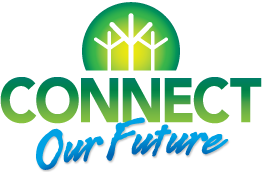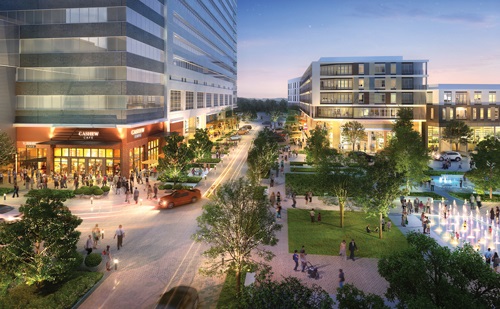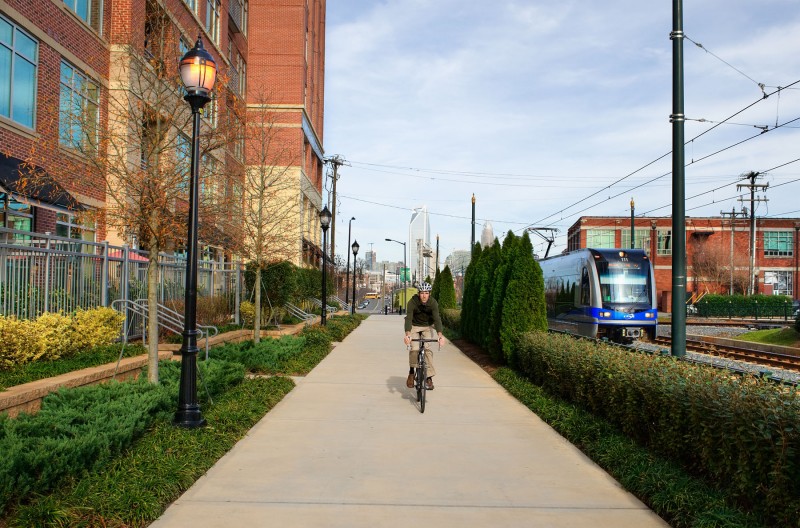Transit Oriented Development (TOD) is a type of development that includes a mixture of housing, office, retail and/or other amenities in a walkable pattern located within ½ mile of quality public transportation. Building equitable, transit-oriented communities means ensuring that people from all walks of life have access to quality transportation choices, housing and opportunity.
Why is this important to your community?
Transit-Oriented Development (TOD) can provide a range of community and individual benefits, from reduced time spent traveling to work, to improved walkability, to access to amenities (and necessities) and lowered transportation costs. The Center for Transit-Oriented Development found that TOD produces 43 percent less emissions than conventional suburban development and increases property values for residents. TOD continues to gain momentum around the country as demographics shift and many American households are showing a preference for compact, walkable, mixed-use communities.
In addition, the average American household spends 19 percent of its budget on transportation alone –nearly 50 percent for housing and transportation costs combined). These averages vary greatly depending on where the household is located (http://locationaffordability.info/). TOD that includes housing at a mix of price points accessible to persons of a wide range of income levels, also helps to reduce high combined housing and transportation costs that can impact families’ ability to spend for other necessities such as medical care, food, education, etc., while providing job access for persons who may not own a car. This means that building and preserving housing in “efficient” locations can create opportunities for families to have more affordable lifestyles.
Skip directly to
How Does It Work?
Resources
Using the Tool
Partners
Where Has It Worked?
Where is it appropriate to use?
What priorities does it address?
What other tools are related?
- Community-Based Housing Strategies
How does it work?
Despite the many benefits, communities often encounter challenges in trying to accomplish TOD. Obstacles may include the high cost of land near transit; the complexity of building mixed-use projects; lack of adequate infrastructure; relatively high cost of developing infill; zoning barriers; and potential community opposition to higher density development or to mixed-income development. It is also important that transit corridors be identified and solid timelines be created for transit operations, so that the creation of the development to support transit and the initiation of transit service occur in a timely manner. There are many types of incentives and funding programs that are being used at the local, regional, and state level to support or incent TOD. At the local level, municipalities can provide direct funding or adopt incentive policies to encourage TOD (e.g., fee waivers, expedited permitting, reduced parking, zoning density bonuses, etc.). Linking TOD and equity may necessitate adopting policies or programs that incentivize affordable or mixed-income housing near transit, coordinating plans for housing and transportation, involving stakeholders of all backgrounds and a range of interests in the community development process.
Many times a transit corridor is chosen, but no specific timeline is developed. In those situations, communities often follow the steps outlined below, but then add the element of phasing. Land use plans, and the development they encourage around transit nodes and lines, should be set up to reduce long-term inefficiencies and government cost through careful planning for long-term infrastructure needs, street spacing, setbacks, etc. As initial development is constructed along identified transit lines and nodes, it should be done with thoughtful consideration about how to “fill in” the targeted areas while preserving the transportation infrastructure.
Ready to get started?
Using the Tool
- Convene municipal planning and transportation departments to understand the existing regulations that may impact transit oriented development.
- Encourage creation of a working group including the regional COG, transit agency, municipal planning and transportation staff, real estate experts and developers, and local leaders to determine the level of interest in a TOD incentive program. Consider the following:
- What are appropriate and needed density thresholds for Station Areas and the small areas surrounding them, and how will those areas be planned for future or re-development?
- What incentive policies historically work in the area? How might those change with transit?
- Can requirements be established by the transit agency to make a corridor “transit-eligible?”
- What zoning updates / revisions are needed?
- How can a mix of housing at varied price points be achieved?
- What potential funding sources and financial incentives are available?
- What potential partnerships with the private sector exist or might be explored?
- How can surrounding neighborhoods become engaged/excited about TOD potential?
- Provide public policy support to encourage this type of development, including defining local and transit agency roles in promoting TOD; transit quality improvements; zoning and design codes that apply to specific sites; and funding for loans or grants to encourage TOD.
- Provide marketing assistance to provide information and gather support and participation in the program. This could include public education campaigns, information sessions, community leader briefings, partnership development, media relations, fact sheets, walking tours, developer kits, etc.
- As TOD is being planned and implemented, monitor and report impacts and successes, including business revitalization, increases in property values, job access, etc.
Partners
- Advocacy Groups
Where has it worked?
Suburban TOD / Dallas Area Rapid Transit - Richardson, TX
About the Program
Since 2000, the suburban city of Richardson, Texas has been working to develop a system of transit-oriented ways linked to the Dallas Area Rapid Transit (DART) system. Located about 10 miles northeast of Dallas, the city of Richmond has completed station area plans with the public to create a focused vision for development around each transit stop. Through public private partnerships, the city has been able to capitalize on the development of planned transit stations through adaptive reuse of older buildings and new development. The transit oriented development has increased taxable value in the city, provided jobs closer to residents, and created new housing options for residents. In addition to working directly with the private sector, the city adopted TOD zoning around the stations and created a TIF district to help fund continuing development of the area.
Why it works
City leadership supported TOD from the early stages of planning and Richardson actively pursued public private partnerships with DART, the Urban Land Institute, real estate developers, and the University of Texas to implement its vision for mixed use development around transit centers. Public participation in the station area planning efforts was also essential to understanding the needs of the community and gaining citizen support. To expand public awareness, Richardson published a FAQ column in the local newspaper answer questions about TOD and the plans for the city’s light rail stations.
Blue Line TOD - Charlotte, NC
About the Program
Charlotte’s LYNX Blue Line, a 9.6 mile light rail line, opened in 2007 along one of the city’s identified growth corridors—the South Corridor—that stretches south from the convention center in Charlotte to South Charlotte. A total of 15 stations were constructed along the line in communities ranging in density from well-populated, walkable city centers to more auto-oriented strip retail centers. Private development and investment has been more successful in the areas closest to Charlotte, while stations located further south have a stronger park and ride ridership. A number of new large-scale TOD developments have been planned and constructed including the Ashton and the Circle (a LEED Certified project). In addition to large apartment buildings, many smaller plots of land have been redeveloped into townhouses or apartments through infill. By 2013, developers completed construction of 1,887 new residential dwelling units and 182,768 square feet of new commercial and office space. The Blue Line has also exceeded ridership estimates since opening and is expected to bring over $1.8 billion in new tax revenue for the city and county.
Why it works
Plans for each of the 15 stations were completed, taking into account the unique aspects of each community. The planning and design team understood that each community required a tailored development approach since there is no set formula or one-size-fits-all approach to creating a TOD. As a result, the City complimented the construction of the new light rail line (construction cost of $465 million) with a $50 million investment in community connectivity enhancements including new street connections, street and intersection enhancements, 9 miles of pedestrian and bicycle access routes, and 16 miles of new sidewalk. The City also worked closely with community members through development response sessions and workshops to ensure that residents understood what new TOD investments would mean for their community. As a result, they implemented a number of new policies to protect existing neighborhoods from potential development pressure and density and scale issues.
Plans for each of the 15 stations were completed, taking into account the unique aspects of each community. The planning and design team understood that each community required a tailored development approach since there is no set formula or one-size-fits-all approach to creating a TOD. As a result, the City complimented the construction of the new light rail line (construction cost of $465 million) with a $50 million investment in community connectivity enhancements including new street connections, street and intersection enhancements, 9 miles of pedestrian and bicycle access routes, and 16 miles of new sidewalk. The City also worked closely with community members through development response sessions and workshops to ensure that residents understood what new TOD investments would mean for their community. As a result, they implemented a number of new policies to protect existing neighborhoods from potential development pressure and density and scale issues.
http://www.nga.org/files/live/sites/NGA/files/pdf/1012TRANSPORTZEILER.PDF




